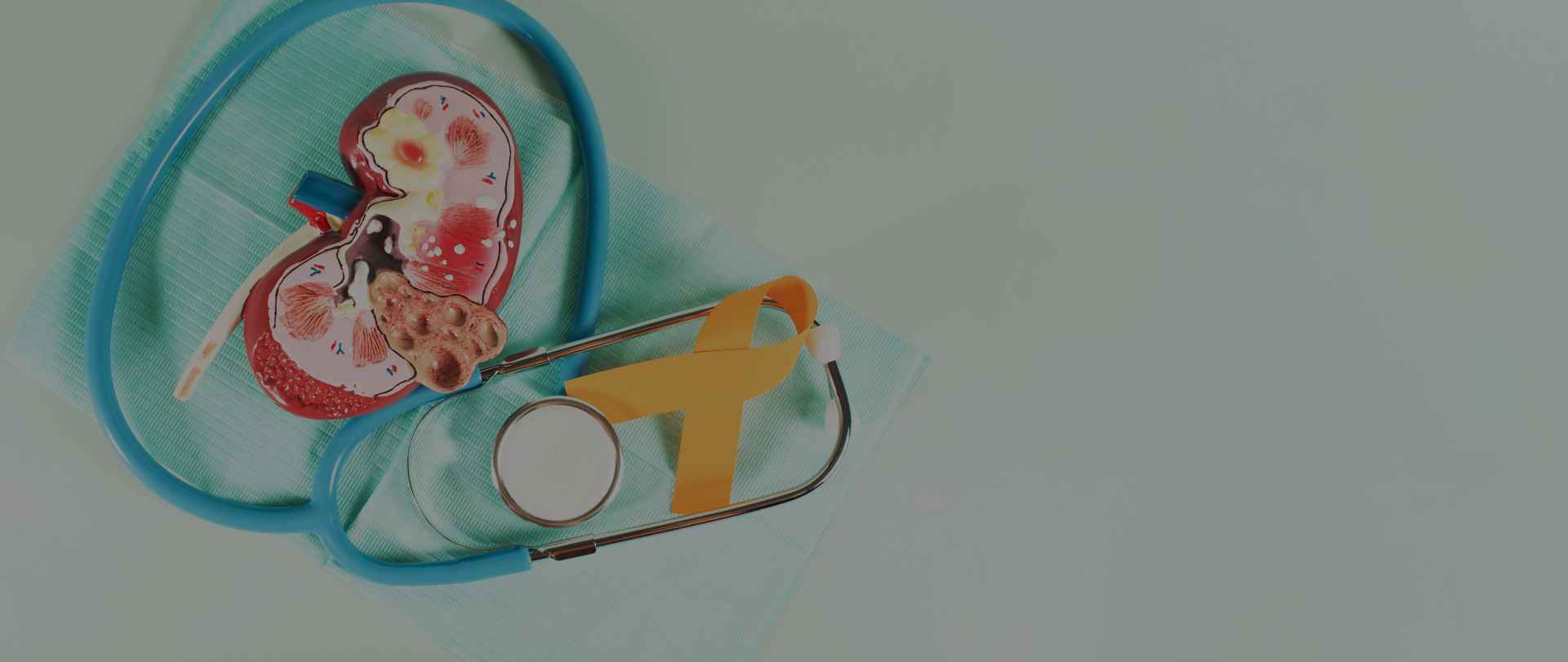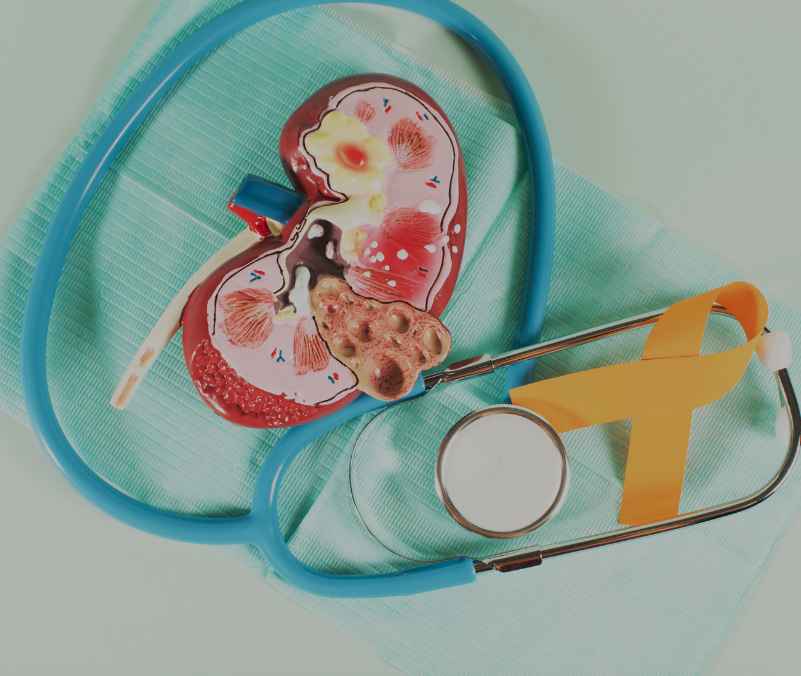Uro-Oncology and Robotic Surgery is the specialized branch of oncology dedicated to cancers of the urinary system and male reproductive organs. This includes malignancies of the prostate, bladder, kidneys, testicles, penis, ureters, and adrenal glands.These cancers are significant health concerns – for example, prostate cancer is among the most common cancers in men worldwide. A focused uro-oncology program is crucial because it brings together expertise and tailored treatments for these diseases, leading to better patient outcomes. Early detection is especially vital: when prostate cancer is caught at an early, localized stage, the 5-year survival rate is over 99%,whereas advanced disease can be far more lethal. By concentrating on urologic cancers, the Aster Centre provides patients the advantage of timely diagnosis and personalized therapy, which can be life-saving and quality-of-life preserving.
Robotic Surgery Innovations
The 4th Generation Da Vinci Robotic Surgical System in an operating room. This advanced platform has multiple robotic arms and a 3D high-definition camera, allowing surgeons to perform complex procedures through tiny incisions with exceptional precision. Robotic-assisted surgery has revolutionized uro-oncological care by enabling minimally invasive yet highly precise operations. The Aster Centre employs the latest robotic systems, including the 4th Generation Da Vinci Surgical System and the SSI Mantra Surgical Robot, to perform complex cancer surgeries (such as radical prostatectomy, partial nephrectomy, or cystectomy) with enhanced accuracy and control. The Da Vinci system provides surgeons with a magnified, true 3D view of the anatomy and robotic arms that translate the surgeon’s hand movements into finer, steadier actions.Likewise, the state-of-the-art SSI Mantra robot offers 3D 4K visualization and a modular multi-arm setup, even supporting telesurgery (remote surgery) capabilities, reflecting cutting-edge innovation in surgical robotics
Advantages of Robotic Surgery: Patients benefit greatly from robotic techniques in uro-oncology. Key benefits include:
- Greater Precision & Control: Robotic instruments can manoeuvre in ways human wrists cannot, enabling delicate dissections (for example, preserving nerves around the prostate that control continence and sexual function) and more complete tumor removal. The system filters tremors and scales motion, which enhances surgical accuracy
- Minimally Invasive Approach: Surgeries are done through small incisions with the robot, resulting in less blood loss, reduced pain, and minimal scarring for the patient. In prostate, kidney, or bladder cancer surgeries, this translates to a lower risk of complications such as infection and a faster return to normal activities.
- Faster Recovery: Because tissue trauma is reduced, patients typically experience quicker recovery times and shorter hospital stays. For example, after a robotic prostatectomy, patients often go home sooner and resume daily routines faster than they would after an open surgery.
By leveraging these advanced robotic surgery innovations, the Aster Centre ensures that complex cancer operations are performed with maximal precision and patient safety, improving cancer control while minimizing the impact of surgery on the patient’s body.
Cutting-Edge Diagnostic Techniques
Accurate and early diagnosis is a cornerstone of effective uro-oncologic care. The Aster Centre stays at the forefront of technology with state-of-the-art diagnostic techniques for prostate and other urologic cancers, enabling earlier detection and more precise treatment planning:
- MRI–Ultrasound Fusion Biopsy (Transrectal/Transperineal): This technique combines multiparametric MRI imaging with real-time ultrasound-guided biopsy to directly sample suspicious areas in the prostate that MRI has identified. By fusing MRI scans with ultrasound, doctors can target biopsies to the most concerning regions rather than relying on a random sampling. This approach has been shown to significantly increase the detection of clinically significant prostate cancers while reducing over-diagnosis of low-risk, indolent tumors.The fusion biopsy can be performed via a transrectal route or a transperineal route – the transperineal approach (through the skin between the scrotum and anus) further lowers infection risk compared to traditional transrectal biopsy.Overall, MRI-fusion biopsy improves accuracy, ensuring that aggressive cancers are caught early when they are most treatable.
- High-Resolution 29 MHz Micro-Ultrasound: Aster is utilizing next-generation imaging like micro-ultrasound for prostate cancer detection. Micro-ultrasound operates at 29 MHz (much higher frequency than standard ultrasound) and yields near-microscopic detail of prostate tissue. This technology provides a ~300% improvement in image resolution, allowing physicians to spot prostate tumor lesions with an accuracy comparable to MRI. Importantly, micro-ultrasound can be used in real-time during a clinic visit – it enables urologists to both visualize suspicious areas and perform targeted biopsies immediately, speeding up the diagnostic process. Studies have noted that micro-ultrasound can delineate prostate cancer architecture that standard ultrasound cannot, aiding in identifying cancer extent and guiding nerve-sparing surgery.
These cutting-edge tools underscore the Centre’s emphasis on early detection. Detecting urologic cancers at an early stage dramatically improves the chances of cure and long-term survival.
Multidisciplinary Cancer Care Approach
Treating cancer effectively requires a multidisciplinary team approach, and Aster’s Uro-Oncology Centre exemplifies this collaborative model. Complex urologic cancers are managed by a coordinated team of specialists including uro-oncologists (urologic cancer surgeons), robotic surgeons, medical oncologists (for chemotherapy or systemic therapies), radiation oncologists, radiologists, pathologists, and specialized nursing staff. This team works together from diagnosis through treatment, regularly holding tumor board meetings to discuss each case and craft the optimal, individualized treatment plan. A coordinated multidisciplinary team (MDT) promotes shared decision-making and comprehensive care, ensuring that all aspects of a patient’s cancer are addressed. Studies have shown that patients managed by an MDT have improved outcomes and higher survival rates compared to those treated in isolation– underlining the value of this approach.
At Aster, the MDT not only focuses on eliminating the cancer, but also on supporting the patient’s overall well-being. Radiologists and pathologists ensure accurate imaging and tissue diagnoses to guide therapy. Medical and radiation oncologists coordinate with the surgeons to provide neoadjuvant or adjuvant treatments (like chemotherapy, immunotherapy, or radiation) when needed, all in sync with surgical plans. Importantly, the Centre also includes onco-nutritionists and ERAS therapists (Enhanced Recovery After Surgery specialists) as part of the team.
Onco-nutritionists tailor diets to help patients maintain strength and immunity during treatment, while ERAS protocols – implemented by physiotherapists and nurses trained in post-surgical rehabilitation – help patients recover faster with fewer complications. This holistic, patient-centric approach means that beyond just treating the tumor, the team manages pain, nutrition, psychological support, and rehabilitation. Every patient’s case is reviewed from multiple angles, and the patient and their family are engaged in the decision-making process to ensure comfort and confidence in the treatment plan. By integrating all these disciplines, the Aster Centre provides world-class, 360-degree cancer care, aligning with global best practices in oncology.
Men’s Health: Restoring Continence and Sexual Function
A unique aspect of the Aster Centre is its comprehensive focus on Men’s Health, particularly addressing issues that can arise from urological cancers and their treatments. Prostate cancer therapies, for example, can sometimes lead to challenges like urinary incontinence or erectile dysfunction. The Centre offers advanced solutions for such conditions, ensuring that patients not only survive cancer but also retain or regain quality of life. Key focus areas in men’s health include interventions for post-prostatectomy urinary incontinence and erectile dysfunction (ED):
- ATOMS (Adjustable Transobturator Male System) for Incontinence: The ATOMS is an innovative implantable sling system designed to treat stress urinary incontinence in men, typically used after prostate surgery. It consists of a mesh sling with an integrated pressure-adjustable cushion that is placed under the urethra. After installation, the cushion can be inflated or adjusted via a port, to provide the right amount of urethral support to prevent leakage. This adjustability allows personalized control to balance continence and comfort. The ATOMS device has gained traction in recent years and is increasingly used for men with mild to moderate incontinence after prostatectomy. It offers a relatively minimally invasive approach (placed via a small perineal incision) and, by compressing the urethra from below, can significantly improve continence while avoiding obstruction of urine flow. By fine-tuning the cushion volume, urologists at Aster can optimize each patient’s continence over time without additional invasive surgery, greatly enhancing patients’ day-to-day confidence and freedom.
- AUS (Artificial Urinary Sphincter) for Incontinence: For more severe cases of post-prostatectomy incontinence, the artificial urinary sphincter remains the gold-standard solution. Aster’s team has expertise in implanting devices like the AMS 800™ AUS, which has been the standard for decades. The AUS is a ring-like cuff that is surgically placed around the urethra and connected to a small pump in the scrotum; it mimics the function of a healthy urinary sphincter. When the cuff is closed, it prevents urine leakage, and when the patient wishes to urinate, pressing the pump temporarily opens the cuff. This device has a proven track record of restoring continence – studies show success rates and patient satisfaction are very high with AUS implants. Although it requires the patient to operate the pump, most men adapt well, and the trade-off is a dramatic improvement in quality of life. By offering AUS implantation, the Centre ensures that even those with significant incontinence can return to an active life without fear of accidents, which is a critical component of holistic cancer recovery care.
- Penile Prosthesis for Erectile Dysfunction: Erectile dysfunction is a common issue for men after treatments like radical prostatectomy or pelvic radiation, and when less invasive treatments (medications, injections, etc.) are ineffective, a penile prosthesis (implant) can be the best solution. Aster’s Men’s Health program provides penile implant surgery using inflatable prosthetic devices. In this procedure, cylinders are placed inside the penis, connected to a pump (in the scrotum) and a fluid reservoir, allowing the patient to produce an erection on demand by activating the pump. Penile prostheses are a well-established third-line therapy for ED, with extremely high satisfaction rates – over 90–95% of men (and their partners) report satisfaction with the results. The implant is completely concealed inside the body and, once healed, restores sexual function in a way that closely approximates a natural erection. This intervention can be life-changing for survivors of prostate or bladder cancer by restoring intimacy and self-esteem. The Aster surgical team brings extensive experience in penile implant surgery, following stringent protocols (such as antibiotic coating and “no-touch” surgical techniques) to minimize any risk of infection and ensure long-term device success. By offering penile prosthesis implantation, the Centre covers the full spectrum of men’s sexual health needs as part of its cancer care continuum.
Through these specialized men’s health services, the Aster Centre demonstrates a commitment to comprehensive care. Patients are not just treated for cancer and then left on their own; instead, issues like incontinence and sexual dysfunction are proactively addressed. This means patients can truly get back to normal life after defeating cancer, with solutions in place for the side effects of treatment. Few oncology centers integrate men’s health so seamlessly, highlighting Aster’s patient-centric ethos.
This integrated approach reflects Aster’s commitment to excellence in uro-oncology and holistic patient care.
Our Doctors
We have some of the best specialists from around the world, they bring years of experience and offer evidence based treatment to ensure the best care for you.
Facilities
Well equipped with the latest medical equipment, modern technology & infrastructure, Aster Hospital is one of the best hospitals in India.
Pain and Palliative Care Diet
Physiotherapy
Psychological
Genetic Counselling Clinic for Lifestyle Against Cancer Recurrence Full-fledged Ayurveda Department
Blogs
The source of trustworthy health and medical information. Through this section, we provide research-based health information, and all that is happening in Aster Hospital.



